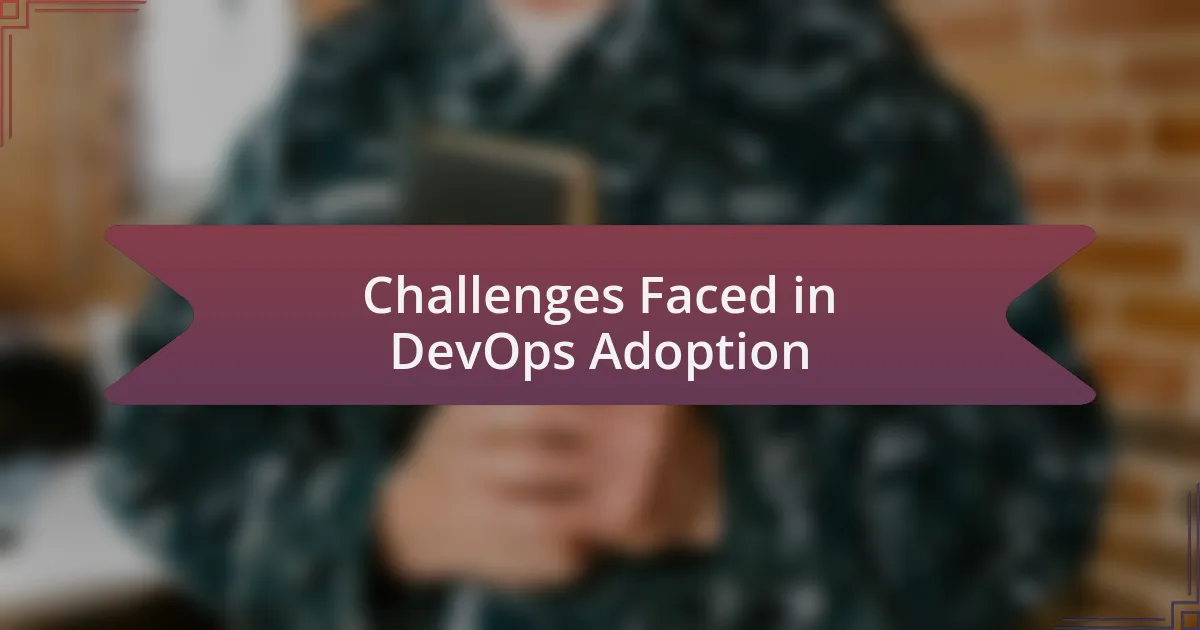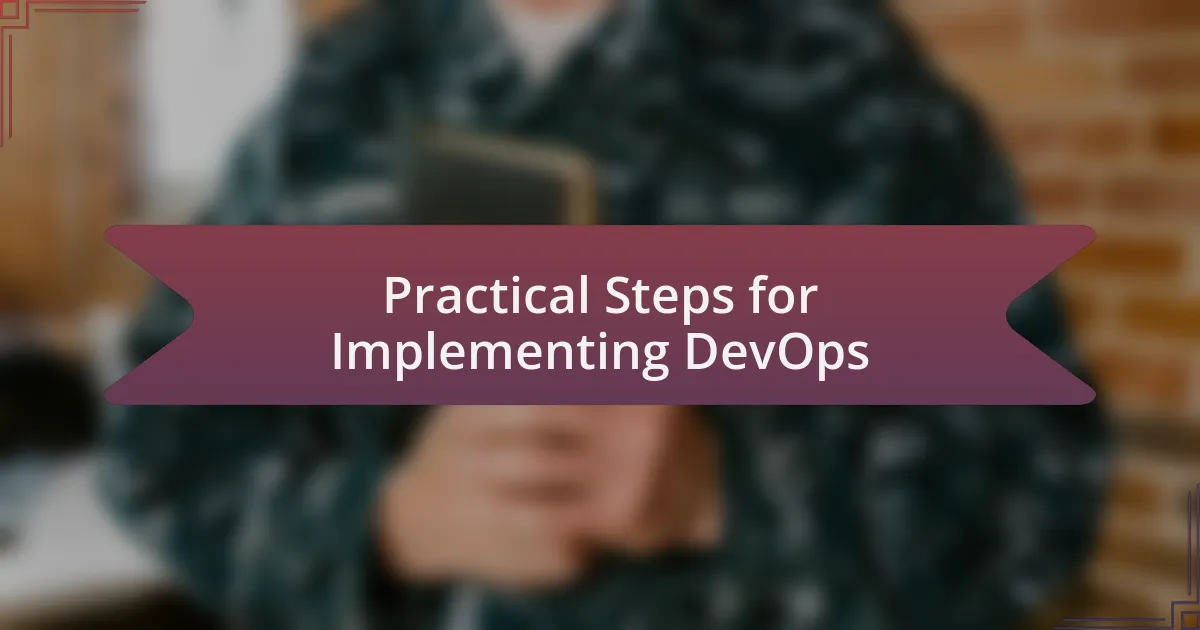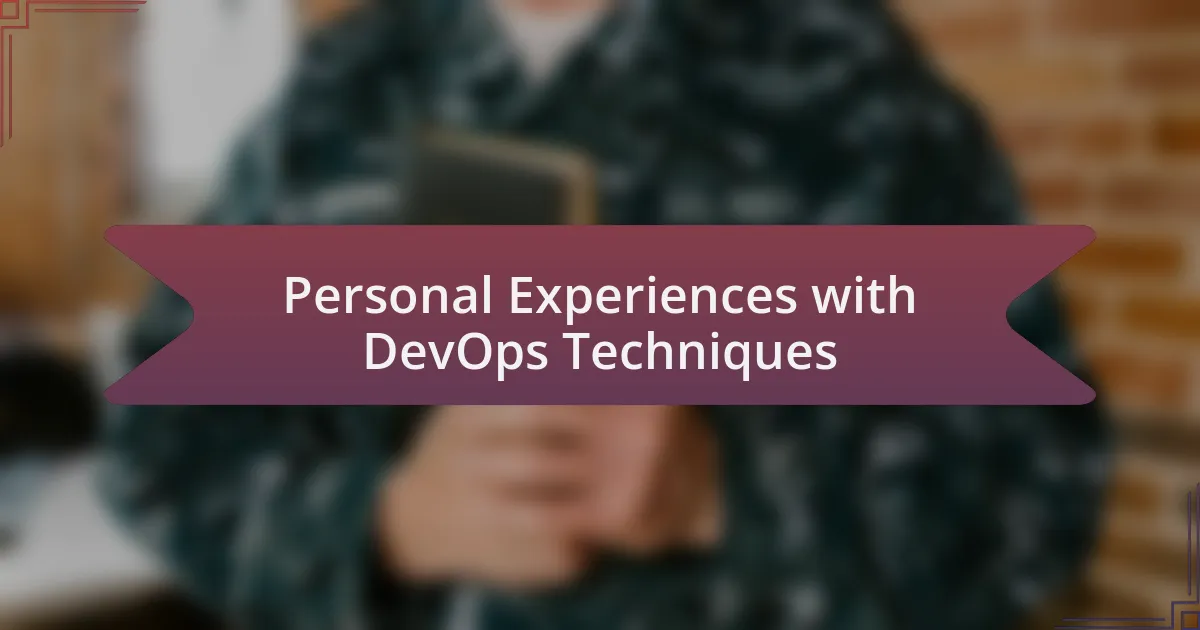Key takeaways:
- DevOps emphasizes collaboration between development and operations teams, breaking down silos for improved efficiency and trust.
- Continuous Integration and Continuous Deployment (CI/CD) enhance the code deployment process, allowing for rapid responses to user feedback.
- Infrastructure as Code (IaC) streamlines environment management, reducing deployment issues and fostering innovation.
- Adopting a culture of openness, effective tool integration, and hands-on training are crucial steps for successful DevOps implementation.

Understanding DevOps Concepts
DevOps is fundamentally about breaking down silos between development and operations teams, fostering a culture of collaboration and communication. I remember the first time I attended a DevOps meet-up; it was enlightening to see different roles united towards common goals. It made me realize how essential this integration is—not just for efficiency, but for building trust among teams.
Another critical concept is Continuous Integration and Continuous Deployment (CI/CD). These practices allow developers to push code changes frequently, automating the testing and deployment process. I can recall the thrill of deploying a fix in real time, knowing that our automated tests would catch any issues before they reached the users. Isn’t it empowering to think that with CI/CD, we can respond to user feedback almost instantaneously?
Lastly, the idea of infrastructure as code (IaC) has transformed how we manage and provision infrastructure. When I first explored IaC, I felt a sense of relief; it made our environments replicable and consistent. Have you ever wrestled with environment disparities? IaC takes away that headache, enabling teams to focus more on innovation rather than troubleshooting deployment issues.

Current Trends in DevOps Practices
One noticeable trend in DevOps practices is the increasing emphasis on observability. I’ve personally witnessed how teams are adopting advanced monitoring tools that go beyond traditional metrics. Understanding your application’s behavior in real time can be a game changer. Have you ever felt the frustration of troubleshooting without enough data? Enhanced observability provides clarity and helps teams proactively address issues before they escalate.
Another significant trend is the shift towards site reliability engineering (SRE). This practice combines software engineering with IT operations, aiming to create scalable and reliable systems. I remember my first project where I collaborated with an SRE team; their insights into performance metrics opened my eyes to a more systematic approach to reliability. How often do we consider the longevity of our solutions? SRE encourages us to prioritize not just immediate fixes, but sustainable solutions that consider future growth.
Lastly, I’ve noticed that the integration of AI and machine learning into DevOps processes is gaining traction. It’s fascinating to see how these technologies can automate routine tasks, allowing teams to focus on more complex challenges. I once participated in a workshop where we explored AI-driven testing tools; the potential to catch bugs before they even reach the code is incredibly exciting. Isn’t it thrilling to think that with these advancements, we can not only work smarter but also drive innovation in ways we hadn’t imagined before?

Challenges Faced in DevOps Adoption
One of the most significant challenges in adopting DevOps is the cultural shift it demands from teams. Transitioning from siloed departments to a collaborative mindset can be tough. I remember when I was part of a team that attempted this shift; it felt like swimming upstream at times, as some team members were resistant to change. Have you encountered similar situations? It’s crucial for organizations to foster a culture that embraces flexibility, communication, and shared responsibility to make this transition smoother.
Another barrier to DevOps adoption is the complexity of integrating tools and processes from existing workflows. I’ve often seen teams struggle to align old and new technologies. Once, I observed a migration where teams spent months grappling with compatibility issues, leading to frustration and wasted resources. How can we avoid these pitfalls? A well-planned strategy that includes thorough training and gradual integration can make a significant difference in ensuring successful adoption.
Lastly, measuring the impact of DevOps practices poses its own set of challenges. Metrics are essential for assessing success, but defining what “success” looks like in a DevOps context can be quite subjective. In one of my previous roles, we grappled with evaluating our efforts and, at times, it felt like we were shooting in the dark. What if we focused more on qualitative feedback along with quantitative metrics? Balancing the right measures can guide teams toward effective practices and continuous improvement.

My Predictions for DevOps Evolution
I foresee that DevOps will evolve into an even more automated and intelligent framework over the next few years. With advancements in artificial intelligence and machine learning, I believe we’ll see tools that not only automate repetitive tasks but also predict issues before they become critical. I recall a time when we implemented a basic automation tool, and the resulting efficiency boost felt like taking a breath of fresh air. Imagine a future where our development environments anticipate our needs—how would that change the way we approach problem-solving?
I also think we will witness an increasing emphasis on security, often referred to as DevSecOps. This means integrating security protocols right into the development process rather than tacking them on at the end. As I have experienced firsthand, fitting security measures into a fast-paced development cycle can be a challenge. But I remember a particular project where security was prioritized early on; the peace of mind it brought made me a firm believer in this proactive approach. Isn’t it time we stop treating security as an afterthought?
Moreover, I predict that collaborative tools will become more sophisticated, enabling teams to share knowledge seamlessly across different locations. During a remote project I managed, we leaned heavily on collaboration tools, which sometimes felt clunky, creating more friction than necessary. As these tools evolve, I anticipate they will foster a stronger culture of collaboration, where everyone feels connected despite physical distances. How much more innovative could our solutions be if we truly harnessed the collective wisdom of our teams?

Practical Steps for Implementing DevOps
To effectively implement DevOps, I recommend starting with open communication channels among teams. In one project, I observed that regular stand-up meetings significantly improved collaboration. Everyone shared their progress and challenges, which not only encouraged transparency but also fostered a sense of teamwork that ultimately led to faster problem resolution. How often do we underestimate the power of a simple conversation?
Next, adopting continuous integration and continuous delivery (CI/CD) practices is crucial. From my experience, setting up a robust CI/CD pipeline can feel daunting, but the benefits are undeniable. One time, after introducing automated testing into our pipeline, we reduced deployment failures by over 30%. This made us realize how efficient we could be when we prioritized automation. Isn’t it interesting how our apprehensions can turn into our greatest opportunities?
Lastly, ensure that your team gets hands-on experience with the tools you want to implement. In a recent initiative, we organized workshops where team members could learn new tools in a supportive environment. This not only built confidence but also sparked enthusiasm about integrating these tools into our daily tasks. How empowering is it to see your team thrive as they gain new skills?

Personal Experiences with DevOps Techniques
In my journey with DevOps techniques, I discovered the transformative power of infrastructure as code (IaC). Once, while working on a cloud migration project, I was hesitant about automating server configuration. However, after seeing how effortless it became to manage environments through scripts, my perspective shifted entirely. It was like switching from a manual typewriter to a sleek laptop—what a difference in efficiency and accuracy! Have you ever experienced a change that made you wonder why you didn’t embrace it sooner?
Another technique that stood out to me was the practice of blameless post-mortems. During a particularly challenging incident, our team faced a significant outage that could have led to finger-pointing. Instead, we opted for a blameless discussion. We delved into what went wrong together, which fostered a sense of trust and accountability. I’ve realized that focusing on collective solutions rather than assigning blame not only resolves issues more effectively but also strengthens team cohesion. Have you found that reflection can be a powerful catalyst for growth?
I also appreciate the role of metrics in driving continuous improvement. In one project, I experimented with tracking deployment frequency and lead time for changes. Initially, I thought these metrics were just numbers, but they revealed so much about our processes. When we identified bottlenecks, it sparked motivated discussions on how we could streamline our workflow. Seeing tangible improvements from our data was incredibly rewarding—how often do we underutilize the insights we have at our fingertips?